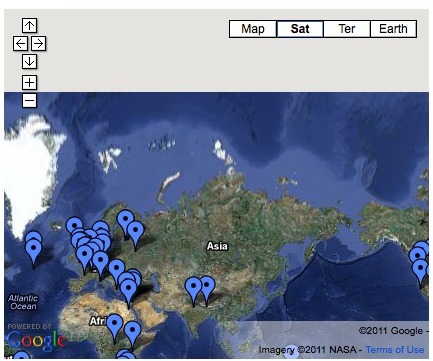In this age of fast travel and instant digital communications, we tend to forget that not so long ago, distances were subjectively very different.
Research and publish the best content.
Get Started for FREE
Sign up with Facebook Sign up with X
I don't have a Facebook or a X account
Already have an account: Login
Interesting links and articles related to IELTS, ESP, EAP and E-learning. Available to teach ESP, EAP, Research Skills, IELTS, TOEFL and General English.
Curated by
Dot MacKenzie
 Your new post is loading... Your new post is loading...
 Your new post is loading... Your new post is loading...
|
MissPatel's curator insight,
December 16, 2014 3:24 AM
A little overview of Malthus's theory on population. |

















"This series of maps shows the great leaps and bounds that were made during the 19th century in transportation technology in the United States. This impacted population settlement, economic interactions and functionally made the great distances seem smaller. This is what many call the time-space compression; the friction of distance is diminished as communication and transportation technologies improve.
Questions to Ponder: When someone says they live "10 minutes away," what does that say about how we think about distance, transportation infrastructure and time? How is geography still relevant in a world where distance appears to becoming less of a factor? "
With the development of modern equipment useful in maneuvering around the world, the time it took those living in the 1800's has been reduced to getting anywhere around the world with time spanning from 30- 24hrs. This of course has been made possible due to the development of roads, better boating constructions and air travel.
Since 1800 the rate of travel has increased exponentially through the years. From the very beginning of travel, it would take close to a week just to get from the east coast to the middle of the United States. Through the use of railroads we have overcome the "time" factor and essentially eliminated it from playing a role in the way we travel. Today's advances in transportation has made seeing others much easier and most importantly it has developed a connected world that allows for transport of goods and services possible to such an extent that as citizens of the United states we are able to access almost anything we need from a day to day basis. A technology like this will continue to expand and grow to make the life of people that much easier.